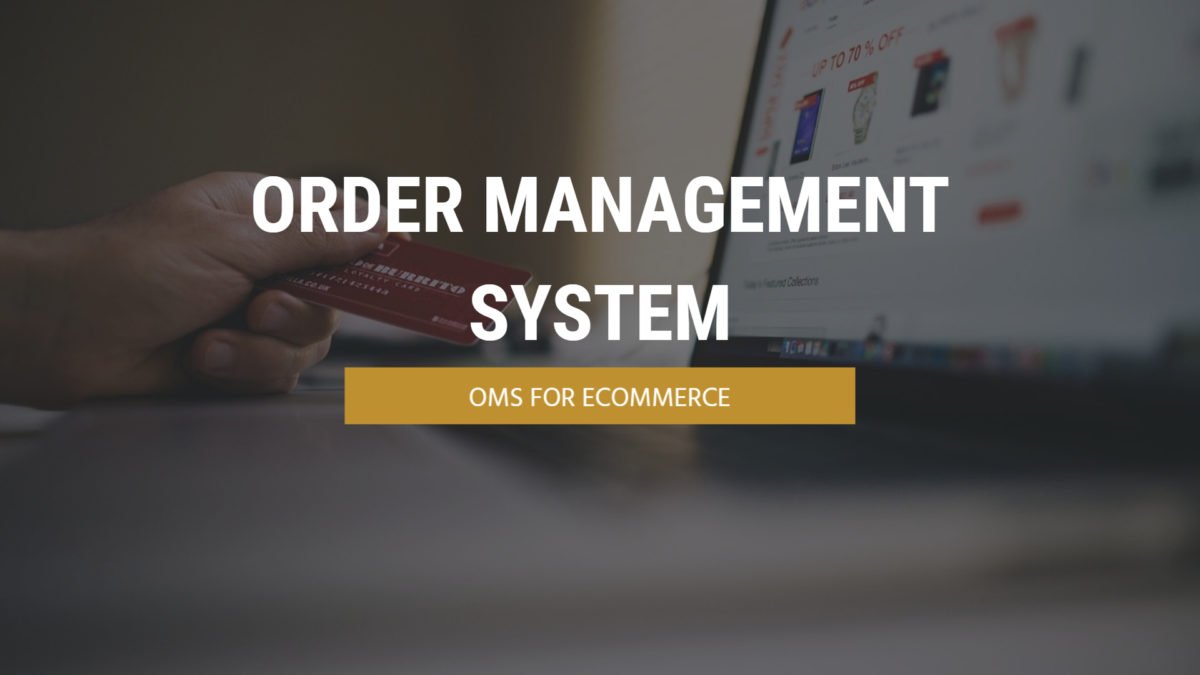Any tool or network that monitors purchases, orders, inventory, and delivery and the people, procedures, and relationships required for goods to reach the consumers who purchased them is known as an order management system. The process of collecting, tallying, and handling orders that come in on your eCommerce website or marketplace is known as order management. Receiving an order from a client, cross-checking and upgrading inventory, transferring the order to the warehouse, and finally packaging and shipping it are all part of the typical operation. These steps can be completed manually or using an order management system (OMS) to automate the operation.
An order management system (OMS) is a piece of online software that helps you handle your orders by keeping them in sync with your inventory. It automates the workflow and reduces manual labor, allowing you to streamline the order management process.
Your order management system should work smoothly with your eCommerce platform, and you shouldn’t have to change the backend layout of your website to accommodate the OMS. The majority of order management systems are designed in such a way that they can easily integrate with any eCommerce platform.
Table of Contents
ToggleTasks of an Order Management System (OMS) Ecommerce
Order Tracking
Order management systems (OMS) keep track of all of your orders, whether they’re placed online, over the internet, or in person. Since your OMS will centralize the whole operation, you’ll be able to access order information and status from anywhere. For your clients and customer support staff, your OMS will keep track of all pending orders. It will keep them updated on the order status to know where their ordered item is in the order fulfillment services process.
Also Read: 25 Ideas That Will Help You Promote Your Online Course
Locating Inventory

Improper management can result in inventory shortages and late deliveries, resulting in revenue losses. Using practices such as item-level labeling, RFID technology, and automated inventory management, an order management system simplifies and centralizes this operation.
Also Read: 5 Reasons Why Email Tracking Is Important for Your Business
Order Fulfilment
Online shoppers can usually wait 1-2 days for their orders to arrive, or 2+ days if delivery is free. The speed at which a store delivers its goods has a significant impact on its revenue and sales. You can only ensure fast and consistent distribution if you allocate warehouses close to your customers. Partnering with a reputable 3PL e-commerce fulfillment company can provide a host of benefits that will streamline your operations and enhance customer satisfaction. One of the most significant advantages is the ability to offer same-day picking, packing, and dispatch services, ensuring swift order processing and timely deliveries. Moreover, with access to clean and safe storage facilities, you can be confident that your inventory will be well-maintained and readily accessible. Additionally, a reputable 3PL provider will offer seamless integrations with various platforms and systems, simplifying your logistics processes and reducing errors. With these advantages and many more at your disposal, outsourcing your fulfillment needs to a trusted 3PL partner can significantly elevate your e-commerce business and foster long-term growth.
Manage Order Returns
In eCommerce, customers often return their orders. It can be difficult to keep track of return orders, update inventory, return the money, update sales and revenue records, and so on.
Multichannel Integration: In your order management system, you can handle sales through all platforms, centralizing the process and reducing duplication errors. An OMS will help you keep a vigilant eye on all of your sales records, allowing you to sell and fulfill orders with greater precision.
Also Read: Why is a Multivendor Marketplace Solution the Best Idea for an eCommerce Business?
How to pick the best Order Management System (OMS) Ecommerce
Supplier Consideration
Your order management system should streamline the process of acquiring goods from vendors. Complex supply chain processes should be streamlined, and you should be able to update your inventory and documents after receiving items quickly.
Integration- order management system
Your OMS should work smoothly with your eCommerce platform, and you shouldn’t have to change the backend layout of your website to accommodate the OMS. The majority of order management systems are designed in such a way that they can easily integrate with any eCommerce platform.
Scalability
As an eCommerce business expands, so do its revenue, suppliers, inventory requirements, sales networks, and so on. If your online store is to grow in size, an OMS framework should manage all of these aspects. It’s critical to figure out what features the company needs now and in the future. Many order management systems have drawbacks and don’t provide all of the functionality that a large company would need, so carefully consider your choices.
Also Read: Ecommerce Inventory Management Software
Warehouse and Fulfilment Integration

Most eCommerce stores typically outsource warehouses, shipping, and fulfillment. An order management system (OMS) must collaborate with the people who prepare, ship and deliver your order. It can search for orders regularly and deliver them to warehouses or third-party fulfillment centers with ease.
Also Read: Best MarketPlace Solutions For Your Online Services
API
Every company has its own set of management criteria. While most OMS can provide you with the majority of functions, you will need to add a few operations on your own. Check to see if your OMS offers you access to their API so you can enhance and tweak the framework to your liking.
Also Read: How to Build an Online Brand Community for Your Start-up?
Reporting and Forecasting
An OMS should report on the trend in your sales and revenue in addition to sending orders and updating details. It can forecast and recognize potential problems (such as a stock shortage) so that you can prepare for them ahead of time.
Automation- order management system
The whole point of having an OMS is to automate the repetitive and time-consuming tasks of order management so you can focus on growing your company. An order management system (OMS) automates tasks, including sending orders to warehouses, reviewing sales reports, creating invoices, and monitoring orders. It’s a good idea to thoroughly look through your OMS catalog to determine how many automated tasks and how many will need to be completed manually.
Also Read: Top Inventory Management Plugins
Customer-Centric Functionalities
Since many e-stores serve customers from all over the world, there will undoubtedly be variations in language, taxes, currency, and other factors. An OMS will reduce the complexity of handling all of these discrepancies by supporting all languages, currencies, and other factors to have a better customer experience.
Also Read: How To Perform a Technical SEO Audit?
Conclusion of Order Management System
Ecommerce businesses and direct-to-consumer brands are always looking for new ways to meet, if not exceed, changing customer preferences. Choosing the right order management system for eCommerce is a difficult job that should not take lightly if you don’t want to lose money due to inventory stock-outs, delayed deliveries, and other issues. Grasp the parameters, make a list of your preferences, and make your decision accordingly.
In the e-commerce world, an order management system is the way of the future. It’s the most efficient way to give customers the quick, personalized, and error-free order fulfillment they’ve come to expect. You must continually think more rapidly, more customized, and more modern as an e-commerce retailer. In both of these regions, today’s order management systems are designed to provide unrivaled customer satisfaction.
Interesting Reads:
How To Protect Ecommerce Store
How to Create and Sell an Online Course – A Complete Guide
Introducing KnowX: A Free WordPress Theme for Knowledge Base Creation







